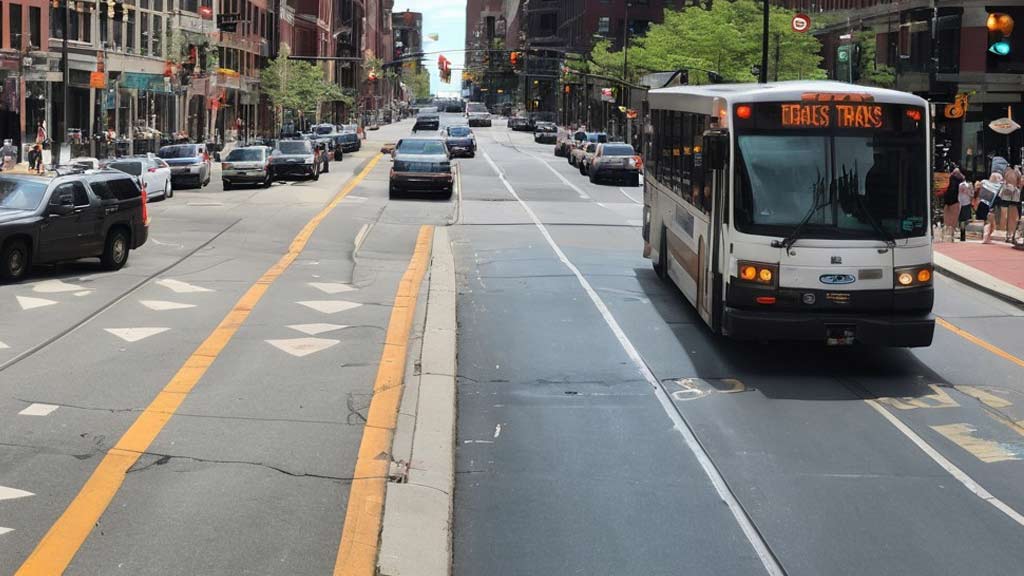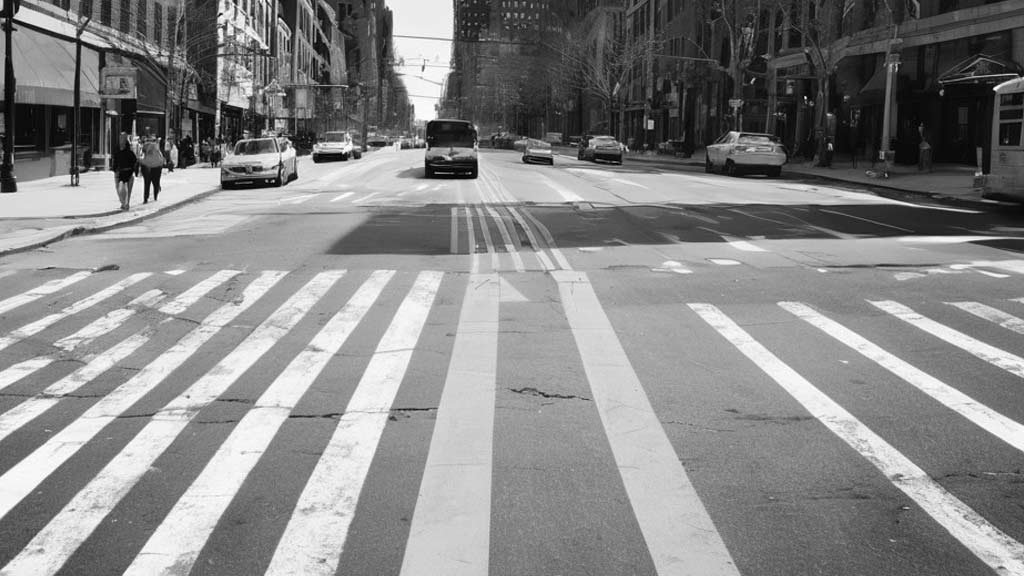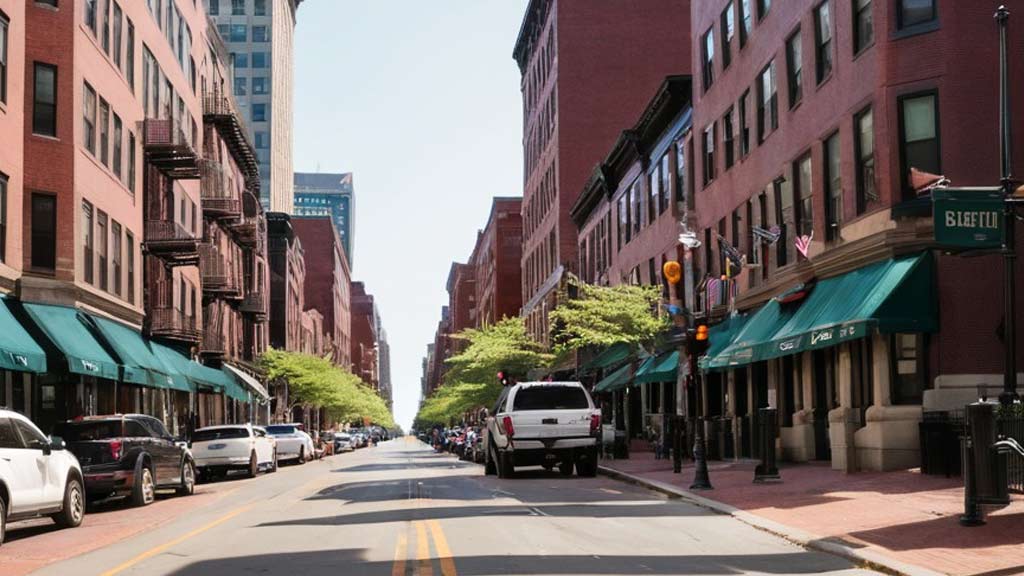Step into Boston’s rich history in the vibrant Leather District, just a stone’s throw away from Chinatown and the bustling South Station.
Beach Street, with its brick and beam architecture and 10ft high ceilings, offers a glimpse into the city’s past and future.
The street is currently undergoing a transformation, complete with new historical street lights and a charming brick walkway, making it a hub of upcoming developments.
Dating back to the early 1900s, Beach Street has witnessed significant milestones, including the opening of the Washington Street Elevated railway and the iconic Washington Street Tunnel.
As documented in historical records, this area has been a focal point of Boston’s growth and evolution. Explore the longest street in Boston and uncover the mysteries and stories that lie within its historic corridors.
Beach Street Boston: A Historical Overview
Beach Street in Boston carries with it a rich tapestry of history that stretches back centuries, weaving through the city’s evolution from a colonial outpost to a thriving metropolis.
Situated in the heart of Chinatown, Beach Street’s story is not only one of commerce and trade but also one of cultural exchange and resilience.
The Origin and Development
Beach Street in Boston holds a rich history that dates back to the early 1900s when it played a vital role in the city’s development.
Initially, earmarked as part of the route for the iconic Washington Street Elevated railway, Beach Street witnessed significant growth and urbanization.
The street’s brick and beam architecture, coupled with its high ceilings, stand as a testament to its industrial past and the resilient spirit of Boston’s urban landscape.
Key Historical Events
Throughout its history, Beach Street has been a witness to several pivotal moments that shaped Boston’s narrative.
The opening of the Washington Street Tunnel in downtown Boston in 1908 marked a significant milestone for transportation infrastructure, connecting various parts of the city.
Additionally, the closure of the Washington Street Elevated railway in 1987 with the opening of the Southwest Corridor reshaped the urban landscape of the area, paving the way for new developments and transformations.
By delving into the historical tapestry of Beach Street, one can unravel the layers of Boston’s past, each brick and beam telling a story of resilience and evolution.
The street remains a vibrant hub, blending historical significance with modern aspirations, inviting explorers to engage with its storied corridors and immerse themselves in its rich heritage.
Cultural Significance of Beach Street
Beach Street in Boston holds significant cultural importance, particularly within the context of Chinatown and the broader cityscape.
Its cultural significance stems from several key factors:
The Influence of Immigration

Beach Street in Boston holds immense cultural significance due to the profound influence of immigration. Dating back to the early 1900s, this vibrant street welcomed a diverse influx of immigrants, shaping the area’s dynamic cultural tapestry.
Through the years, various immigrant communities, including Chinese, Italian, and Irish, have made Beach Street their home, infusing the neighborhood with their traditions, cuisine, and customs.
The fusion of these diverse cultural elements has contributed to the unique identity of Beach Street, making it a melting pot of traditions and a symbol of Boston’s multicultural heritage.
Architectural Landmarks
The architectural landmarks along Beach Street stand as testaments to the area’s rich history and cultural heritage.
The street’s iconic brick warehouses and factories, with their distinctive architectural details such as large glass storefronts and cast iron columns, reflect the industrial past of Boston and the resilience of its urban landscape.
These historical buildings, characterized by their brick and beam construction and high ceilings, offer a glimpse into the city’s past and serve as reminders of the thriving industrial hub that once defined Beach Street.
Today, these architectural gems continue to attract visitors, art enthusiasts, and history buffs, showcasing the enduring legacy of Beach Street’s architectural heritage.
Beach Street’s Role in Boston’s Transportation
Beach Street has played a significant role in Boston’s transportation network throughout its history, serving as a vital artery connecting various parts of the city and facilitating the movement of people and goods.
Here’s a breakdown of its role in transportation:
From Turnpikes to Public Transit

Beach Street in Boston has a rich history intertwined with the evolution of transportation in the city. Starting back in the early 1800s, the street was part of the route for one of the first state highways in Boston.
Initially, it served as a crucial link connecting Dedham to West Roxbury Parkway, later becoming a significant thoroughfare for public transit systems like the Washington Street Elevated railway.
The transformation of Beach Street from a part of a turnpike to a vital artery for public transportation showcases its adaptability and importance in Boston’s transportation network over the years.
Evolving Traffic Patterns
As transportation systems evolved, Beach Street witnessed significant changes in traffic patterns. The introduction of the Washington Street Tunnel in 1908 revolutionized the way people moved through the city, providing a direct link for commuters from downtown to various neighborhoods.
Beach Street’s role in facilitating smoother traffic flow and connectivity within Boston became more pronounced with the rise of public transit options.
The closure of the Washington Street Elevated railway in 1987 marked a shift in the area’s transportation landscape, leading to the development of new infrastructure like the Southwest Corridor.
Beach Street’s adaptation to changing traffic patterns reflects its resilience and continuous relevance in shaping Boston’s transportation history.
Preservation and Revitalization Efforts
Preservation and revitalization efforts for Beach Street in Boston have been critical in maintaining its historical significance and ensuring its continued vibrancy as a cultural and commercial hub.
Here are some key initiatives and strategies:
Conservation of Historical Buildings

Preserving the historical buildings along Beach Street in Boston is crucial to maintaining the area’s cultural heritage and architectural charm.
These buildings, with their unique designs and structures, serve as tangible links to the neighborhood’s past, providing insight into its development over time.
By conserving these structures, you’re not just safeguarding physical landmarks but also safeguarding the stories and memories embedded in them.
Community Initiatives
Engaging in community initiatives is essential for the revitalization of Beach Street in Boston. Your involvement in local projects and programs can play a vital role in enhancing the neighborhood’s vitality and sense of community.
Whether it’s participating in neighborhood clean-up efforts, supporting small businesses, or attending cultural events, your active participation can contribute to the ongoing revitalization of Beach Street.
By coming together as a community, you’re actively shaping the future of this historic area, ensuring its continued vibrancy for generations to come.
Frequently Asked Questions
What is the historical significance of Beach Street in Boston?
With roots dating back to the early 1800s, Beach Street played vital roles in state highway development and public transit evolution. The Washington Street Tunnel’s opening in 1908 and the closure of the railway in 1987 reshaped transportation in the area, leading to initiatives like the Southwest Corridor.
How has Beach Street accommodated changing transportation needs?
Beach Street adapted to evolving transportation demands by serving as a state highway and a significant link for public transit, including the Washington Street Elevated railway. The closure of the railway in 1987 paved the way for transportation infrastructure development in the area.
What cultural influences have shaped Beach Street over the years?
Beach Street reflects a rich cultural tapestry influenced by diverse immigrant communities throughout its history. Efforts to conserve historical buildings and engage in community initiatives aim to preserve this cultural heritage for future generations.
What initiatives are being taken to preserve Beach Street’s historical significance?
Preservation efforts include conserving historical buildings and engaging in community projects to revitalize Beach Street. These endeavors not only enhance the neighborhood’s vitality but also foster a sense of community, ensuring the continued vibrancy of this historic area.
Why is it important to safeguard the heritage of Beach Street?
By safeguarding historical structures and actively participating in local projects, Beach Street’s heritage is protected, preserving its cultural richness and ensuring a vibrant community atmosphere for future generations.
Conclusion
Preserving the rich history and cultural diversity of Boston’s Beach Street is vital for maintaining the neighborhood’s unique charm and character.
By conserving historical buildings and actively engaging in community initiatives, the area’s heritage can be safeguarded for future generations to enjoy.
The evolution of Beach Street, from its origins as a state highway to a bustling transit route, reflects the city’s dynamic development over the years.
Through ongoing efforts to revitalize the neighborhood and promote its historical significance, Beach Street continues to thrive as a vibrant cultural hub in Boston.
Embracing the past while looking towards the future, Beach Street stands as a testament to the resilience and spirit of its diverse communities, ensuring its legacy endures for years to come.
Jaclyn Lowe